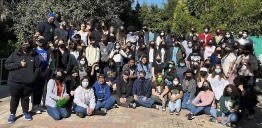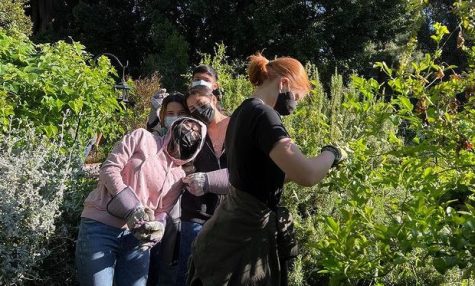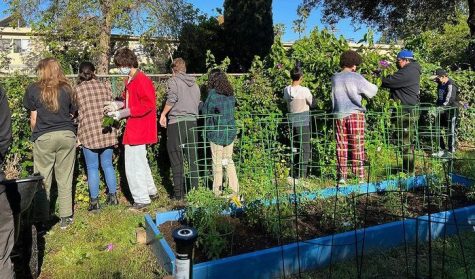Earth Day

On Friday, April 22nd, 2022, Earth Day was celebrated for the fifty-second time.
Earth Day was officially created by Senator Gaylord Nelson in 1970. When Earth Day was first established, there were many acts and agencies that we have today that were not yet created.
There was no Clean Air or Clean Water Act, let alone anything like WWF or even the Environmental Protection Agency. There was nothing to regulate how much smoke was emitted by factories, or what could be dumped where.
After this holiday was put in place, its intentions were a clear success. The first Earth Day was celebrated by around twenty million people in the US alone. Eight months later, the government put in place the creation of the US Environmental Protection Agency, or the EPA.
Today, Earth Day is celebrated worldwide, especially in schools like our own. The Zoo Magnet had the opportunity to participate in a few Earth Day-based activities in place of classes.
Tenth graders started their day at the main campus, helping in the agriculture area by removing invasive morning glories. The flowers have been an issue for a while now—they grow quickly, and take over the non-invasive plants by growing their vines to essentially constrict the plants’ veins and nutrient flow. The morning glories need to be frequently weeded and removed from the area by students and staff.

The second stop of the day was the Gene Autry Museum, which is directly across from the Zoo Magnet’s campus. The main event was a tour of a few of the art exhibitions on display, led by Anna Becker, a curator at the museum. The first exhibit was focused around art inspired by California and the much of western United States before it was colonized. One of the main points of this exhibit was to show the beauty of seemingly untouched land, which is very rare nowadays.
The main focus of one of the largest paintings in the room was not on the forest or valley in the foreground, but of a cross seemingly carved in the side of a mountain and filled with snow in the background. Most peoples’ first assumption when seeing this painting—and the mountain that the painting was inspired by—is that colonizers carved the cross in the mountain. As much sense as it might make, this assumption is false- the cross was caused by erosion, and the only people to have been in that area were natives of the land.
“Wild places should not have be perceived as untouched to have value,” Becker told the group of students.
The third and final stop of the day made by the tenth grade was the LA Zoo. A tour was led by Dan Keefe, a member of the LA Zoo staff who is helping with the plans for the zoo’s new renovation. As Keefe brought the tenth-grade class to different locations around the zoo, he explained how and what they would change.

“We’re aiming for bigger enclosures, more open space.” Keefe explained, “We don’t want to dig up any of the land nearby containing native plants and soil that we can use, but there’s a lot of unused space available at our disposal.”
Along with this, one of the main projects planned for the renovation is the creation of an area for the first enclosure of Californian condors since the Zoo began its rehabilitation program for the birds.
“There’ll be a canyon built into the side of the hills where people can walk right up and look inside. We’re hoping to be finished with the whole project in around twenty years- you can all come back and visit after college,” Keefe told the group.
All of this is leading up to over all more sustainable and freer space for the animals, while still allowing an enjoyable experience for visitors.
Your donation will support the student journalists of North Hollywood High School. Your contribution will allow us to purchase equipment and cover our annual website hosting costs.
